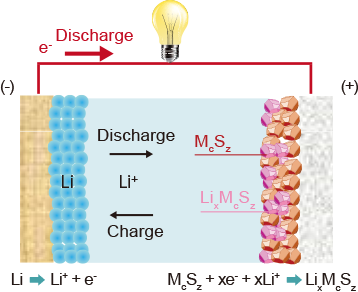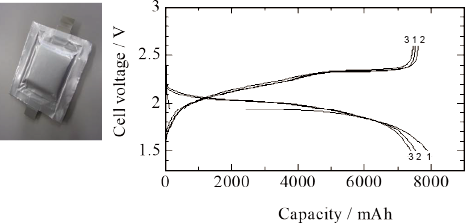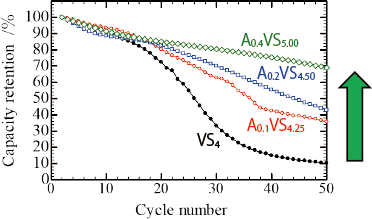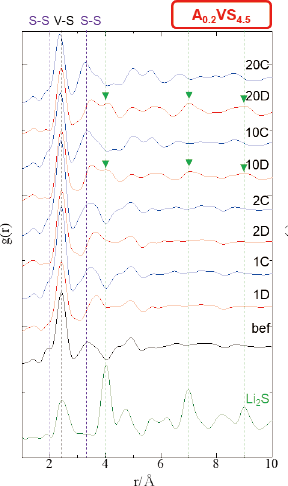Sulfide Battery
Sulfur has been attracting attention as a promising positive material of high-performance and low-cost batteries. Combining this positive electrode with high-capacity negative electrode like Li metal, the battery is expected to be applicable to EVs, renewable energy storage, and even aircraft. RISING2 is developing technologies for suppressing the sulfur dissolution in conventional Li–S batteries and improving their performance.
Features and Advantages
- High theoretical energy as a result of high-capacity negative and positive electrode
- Improved safety and long life as a result of suppressed sulfur dissolution
- Low-cost materials
- Lighter than LIBs
R&D Themes
- Development of long-life and high-capacity metal polysulfides
- Structure and components of the negative electrode that do not limit cell performance
- Balancing of energy density and other performance attributes

R&D Strategies
- Positive electrode: technique for stabilizing sulfur in materials, sulfur content optimization and understanding the structure of the reaction mechanism
- Negative electrode: understanding the trigger point of full cell degradation and developing a structure that avoids negative electrode degradation
- Total cell: understanding the phenomena of battery performance both within and beyond ordinary usage conditions
Research Results
Demonstration of the higher energy density of a prototype cell with novel metal polysulfide and matching components

The prototype cell (8 Ah-class) and its initial discharge–charge curves with low-crystallized VS4, which demonstrated an energy density of 314 Wh/kg.

Improvement of the cycling properties of VS4: the addition of element “A” and the adjustment of the sulfur content dramatically improved the cycling properties.

Results of advanced analysis of the side-reaction during operation; Li2S formation was detected by X-ray total scattering measurement and the side reaction was suppressed after the addition of “A”.
